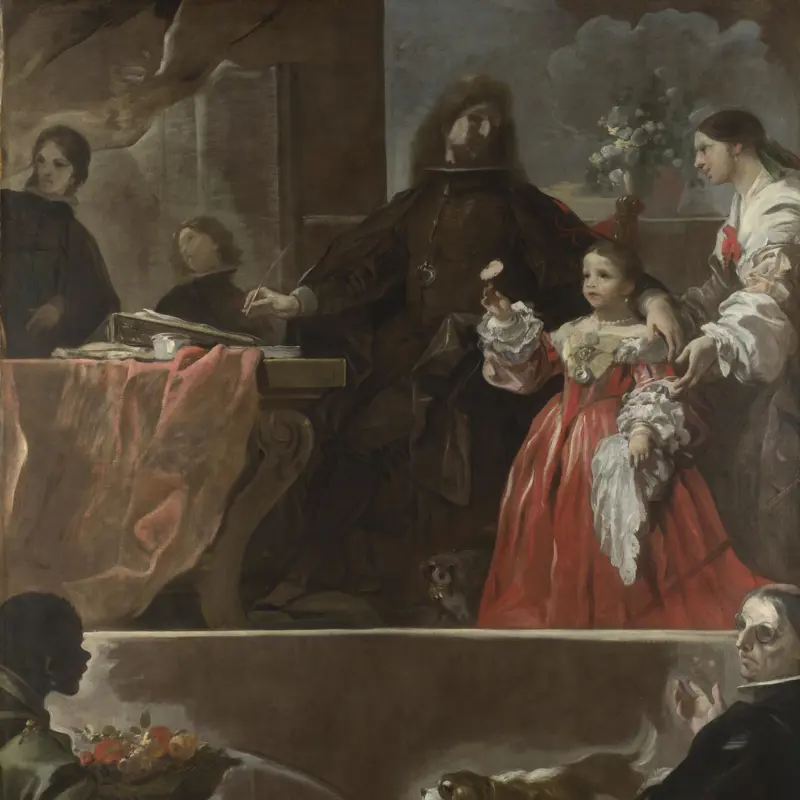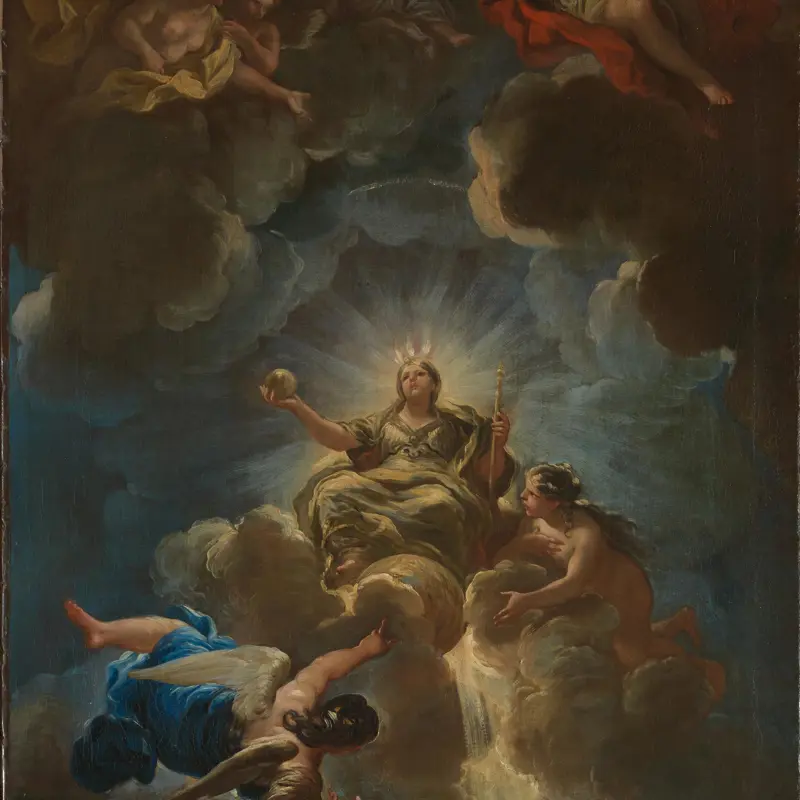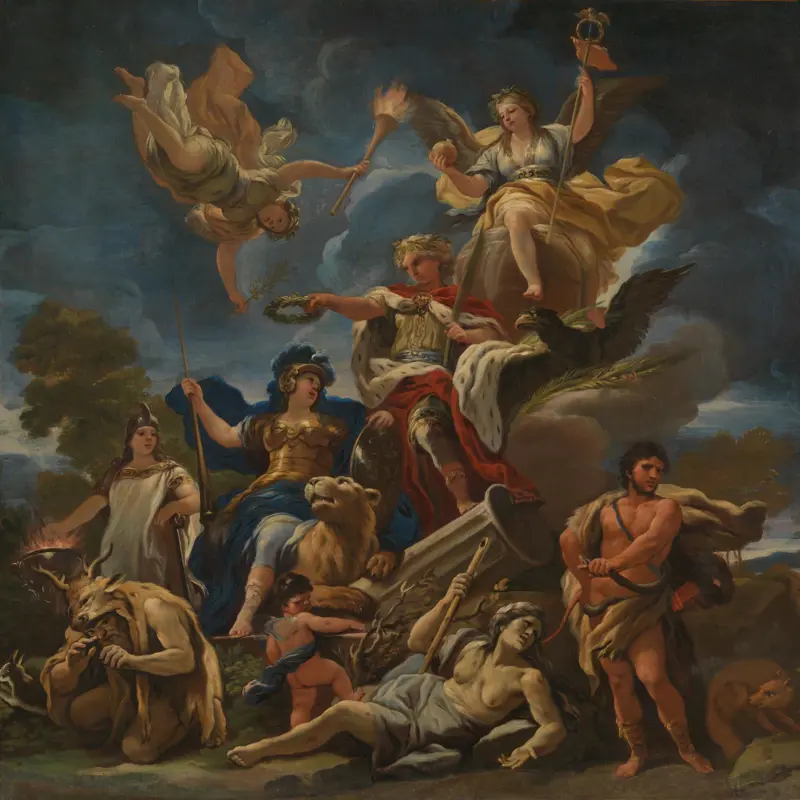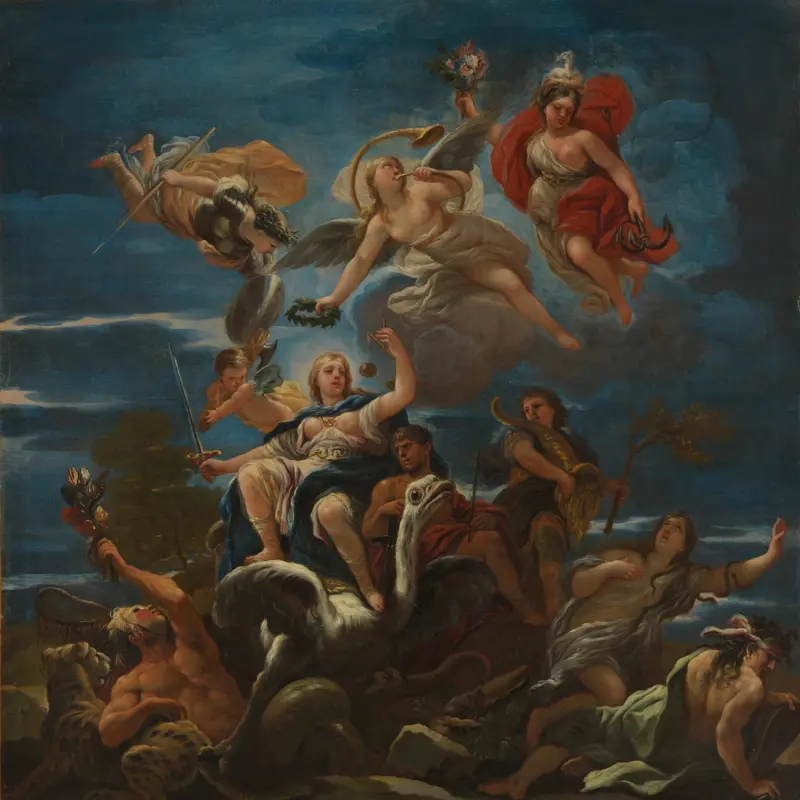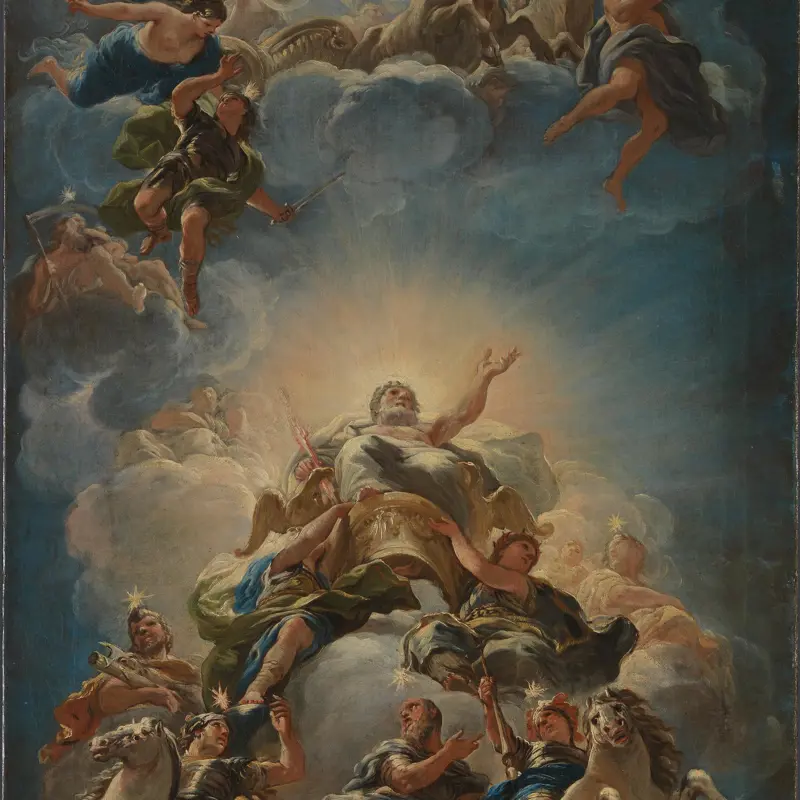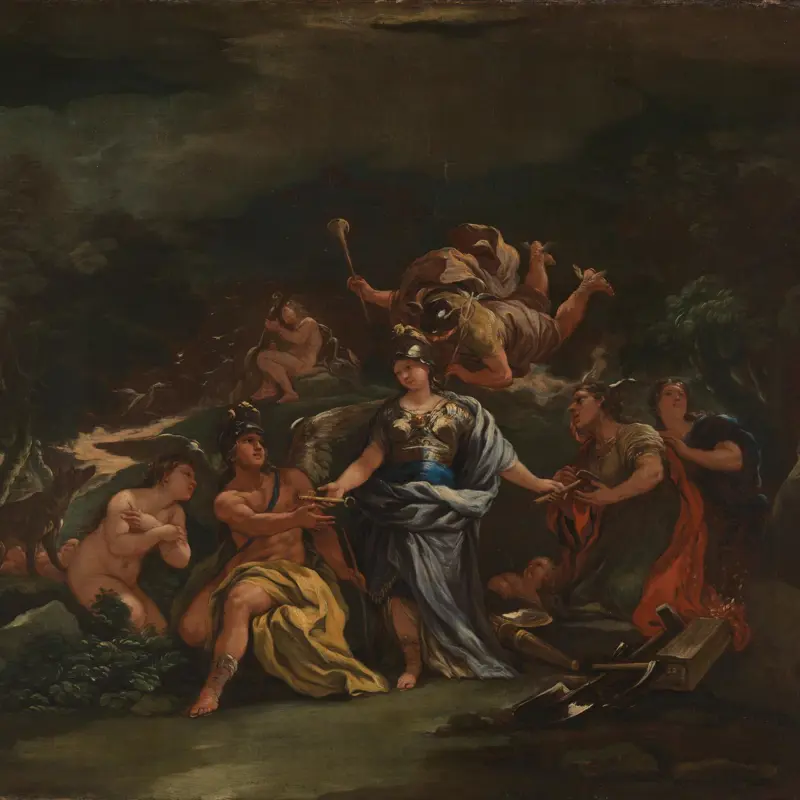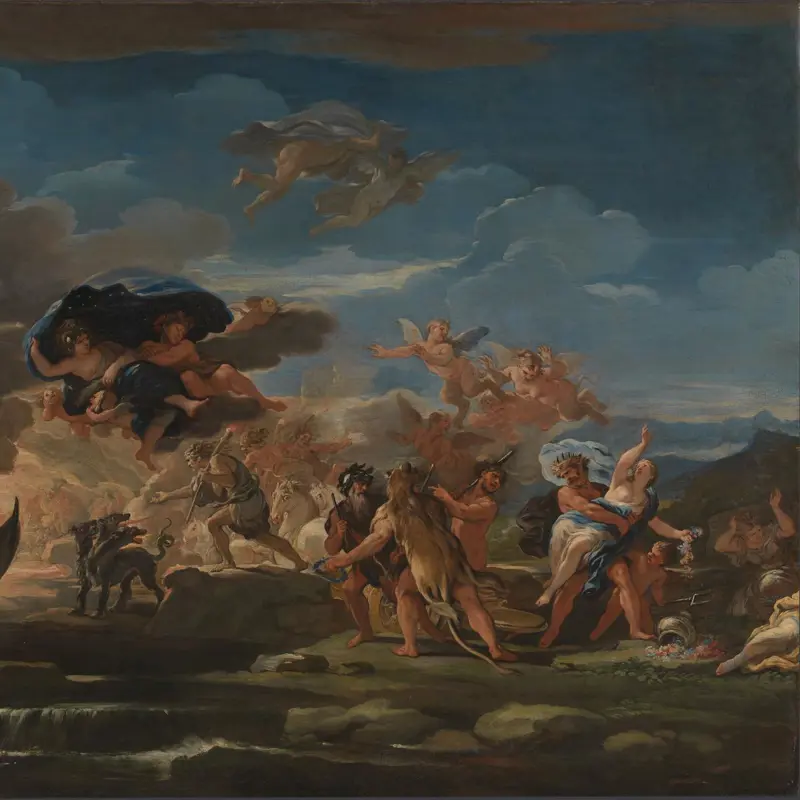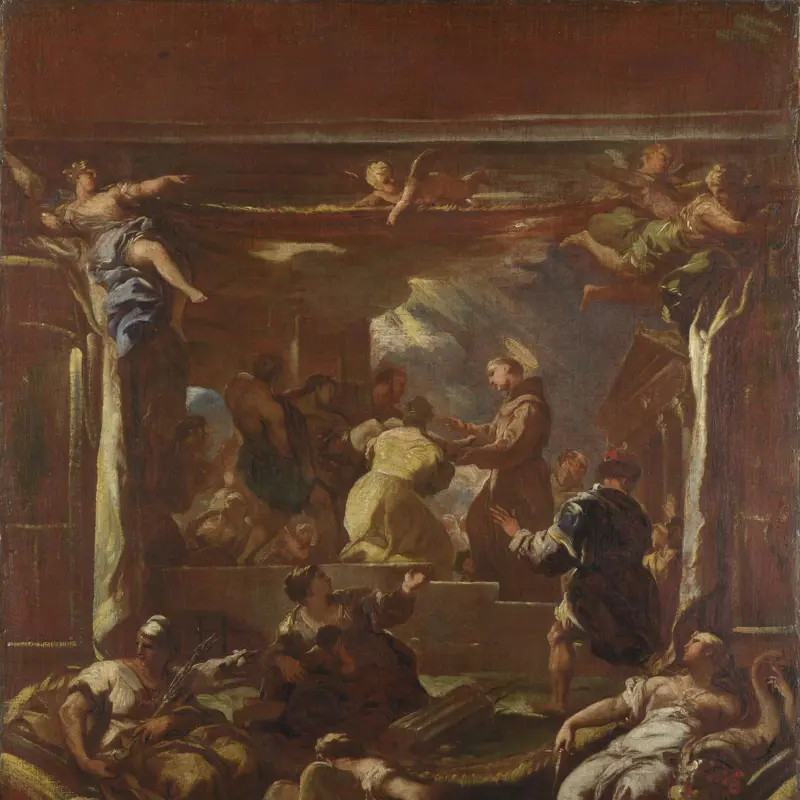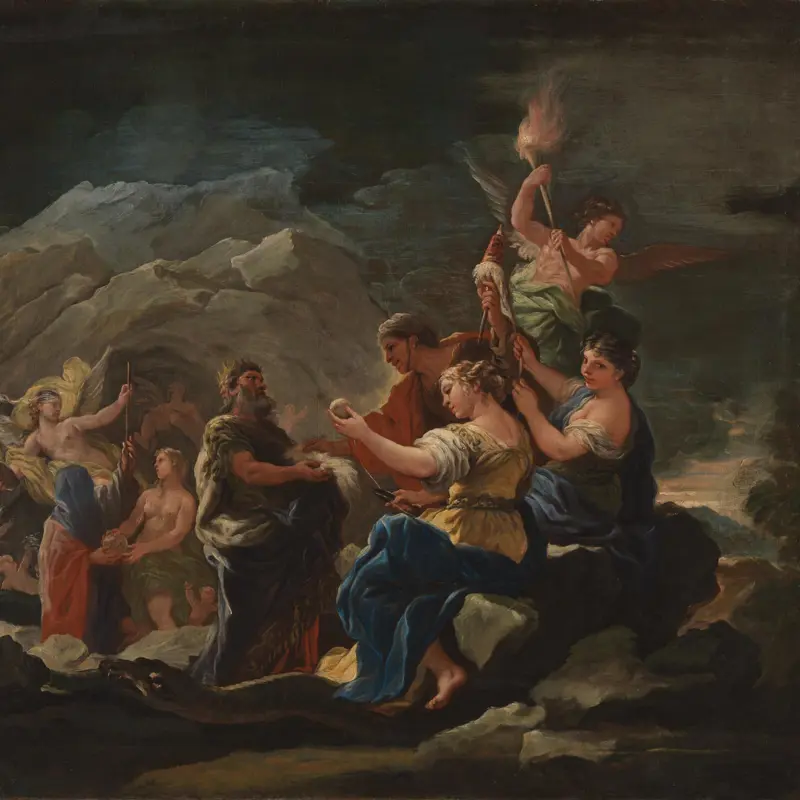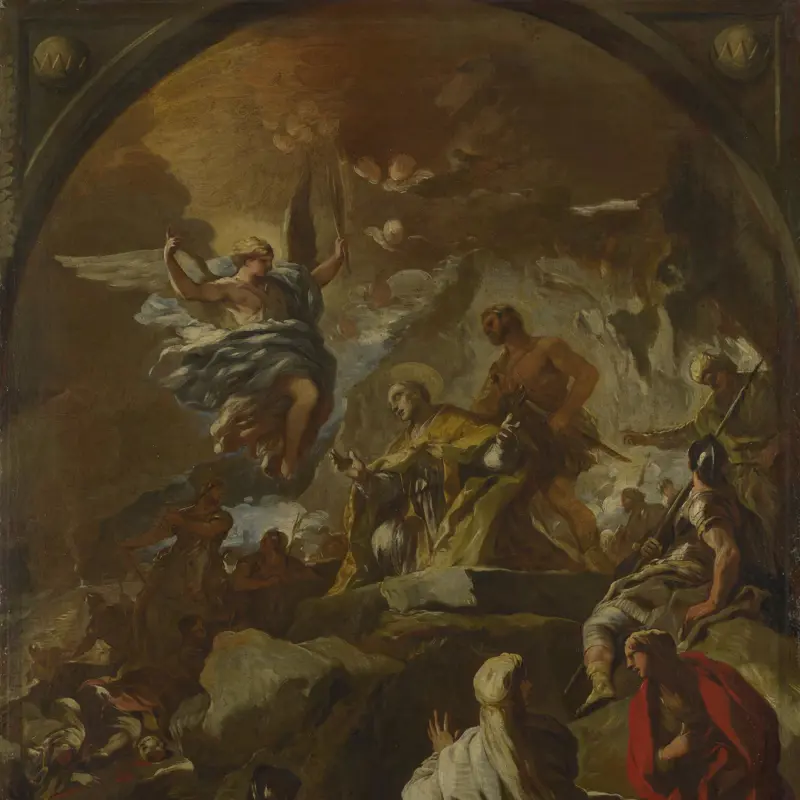Luca Giordano, 'Perseus turning Phineus and his Followers to Stone', about 1660
About the work
Overview
Perseus and Andromeda’s wedding feast has been violently interrupted by Phineus, to whom Andromeda was formerly betrothed. Giordano has illustrated the dramatic moment when Phineus and his followers attack Perseus. Heavily outnumbered, Perseus has unveiled the severed head of the gorgon Medusa, who he had recently slain. He averts his eyes, because all those who look on Medusa immediately turn to stone. His attackers have had no time to react, and Giordano has vividly portrayed their flesh turning from pink to stone grey.
Phineus is most likely the figure at the far left wearing the elaborate helmet and breastplate. His head and left side have already turned to stone and his mouth is frozen in a petrified scream, but his right arm and right leg are still pink with life. His two companions are suffering a similar transformation. The poses of Phineus and the figure in front of him are based on famous antique sculptures, a fact which would not have been lost on Giordano’s contemporaries.
Key facts
Details
- Full title
- Perseus turning Phineus and his Followers to Stone
- Artist
- Luca Giordano
- Artist dates
- 1634 - 1705
- Date made
- About 1660
- Medium and support
- Oil on canvas
- Dimensions
- 285 × 366 cm
- Acquisition credit
- Bought, 1983
- Inventory number
- NG6487
- Location
- Room 32
- Collection
- Main Collection
- Frame
- 17th-century Florentine Frame
Provenance
Additional information
This painting is included in a list of works with incomplete provenance from 1933–1945; for more information see Whereabouts of paintings 1933–1945.
Text extracted from the ‘Provenance’ section of the catalogue entry in Michael Levey, ‘National Gallery Catalogues: The Seventeenth and Eighteenth Century Italian Schools’, London 1986; for further information, see the full catalogue entry.
Exhibition history
-
2015The Golden Century of Neapolitan PaintingMusée Fabre20 June 2015 - 11 October 2015
Bibliography
-
1742B. De Dominici, Vite de' pittori, scultori ed architetti napoletani, Naples 1742
-
1745A.-J. Dézallier d'Argenville, Abrégé de la vie des plus fameux peintres, Paris 1745
-
1762A.-J. Dézallier d'Argenville, Abrégé de la vie des plus fameux peintres, nouv. éd, Paris 1762
-
1780C.G. Ratti, Instruzione di quanto può vedersi di più bello in Genova in pittura, scultura, ed architettura ecc, Geneva 1780
-
1780C.G. Ratti, Descrizione delle pitture … dello stato Ligure, Genoa 1780
-
1966O. Ferrari and G. Scavizzi, Luca Giordano, Naples 1966
-
1980Christie's, Important Old Master Paintings, London, 12 December 1980
-
1982Whitfield and J. Martineau (eds), Painting in Naples 1606-1705: From Caravaggio to Giordano (exh. cat. Royal Academy of Arts, 2 October - 12 December 1982), London 1982
-
1984O. Ferrari, Civiltà del seicento a Napoli (exh. cat. Museo di Capodimonte, 24 October 1984 - 14 April 1985), Naples 1984
-
1985National Gallery, The National Gallery Report: January 1982 - December 1984, London 1985
-
1985M. Helston, Luca Giordano: Perseus turning Phineas and his Followers to Stone (exh. cat. The National Gallery, 26 June - 26 August 1985), London 1985
-
1986Levey, Michael, National Gallery Catalogues: The Seventeenth and Eighteenth Century Italian Schools, London 1986
-
1987P. Boccardo and L. Magnani, 'La Commitenza Balbi', in Il Palazzo dell'Università di Genova, Genoa 1987, pp. 47-88
-
1987P. Boccardo, 'Per la storia della quadreria di Palazzo Spinola', in Palazzo Spinola a Pellicceria: Quaderni della Galleria Nazionale di Palazzo Spinola, Genoa 1987, pp. 62-86
-
1991C. de Brosses, Lettres familières (1739-40), eds G. Cafasso and L. Norci Cagiano de Azevedo, Naples 1991
-
1991C.-N. Cochin, II, Le voyage d'Italie de Charles-Nicolas Cochin (1758): Édité en facsimile avec une introduction et des notes [par] Christian Michel, ed. C. Michel, facsimile edn, Rome 1991
-
1992O. Ferrari, Luca Giordano: L'opera completa, 2 vols, Naples 1992
-
1995L.J. Feinberg, 'Luca Giordano's "Abduction of the Sabine Women"', Art Institute of Chicago Museum Studies, XXI/1, 1995, pp. 38-47
-
2001
C. Baker and T. Henry, The National Gallery: Complete Illustrated Catalogue, London 2001
-
2001S. Cassani et al., Luca Giordano, 1634-1705 (exh. cat. Museo di Capodimonte, 3 March - 5 June 2001; Kunsthistorisches Museum, 17 June - 7 October 2001), Naples 2001
About this record
If you know more about this work or have spotted an error, please contact us. Please note that exhibition histories are listed from 2009 onwards. Bibliographies may not be complete; more comprehensive information is available in the National Gallery Library.

